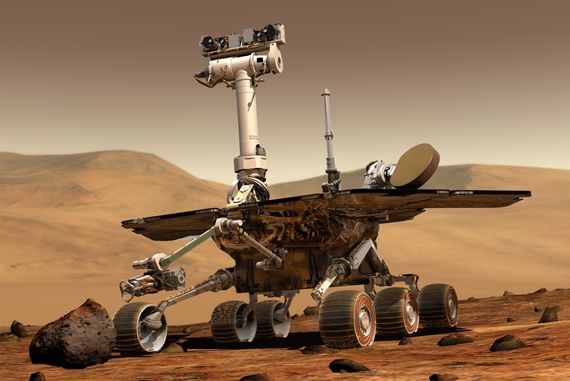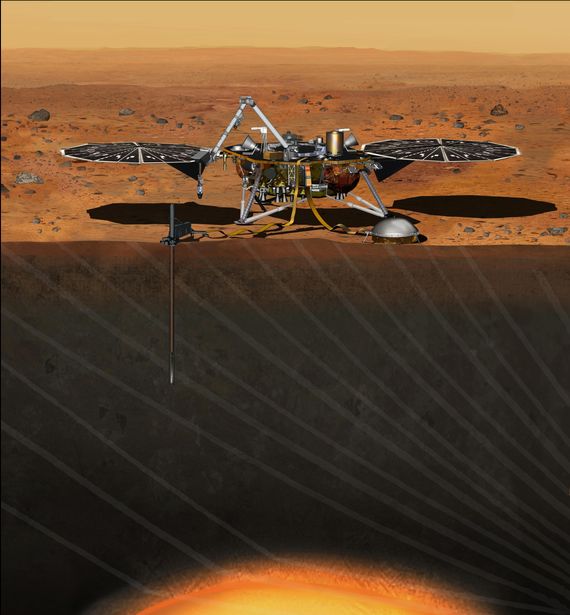Since NASA’s Viking missions landed on Mars in 1976 —the first to succeed— the red planet has become the perfect field of study for rovers: the space exploration vehicles that traverse its arid surface. Now new missions are being prepared, with robot geologists that seek to dig into the astrobiological mysteries of the planet to depths that have never before been reached.
Thus far, a total of four devices of this type have explored Mars: the small Sojourner (1997), the size of a microwave; the twin robots Spirit and Opportunity (2004); and the famous Curiosity (2012), the NASA exploration vehicle whose challenging landing had the entire scientific community on the edge of their seats. Opportunity and Curiosity are still operational, although their relief will arrive soon: a new generation of robots that promise to surpass the functions of the current ones. Opportunity and Curiosity are still operational, although their relief will arrive soon: a new generation of robots that promise to surpass the functions of the current ones.
“So far, the missions have dug to a maximum depth of less than ten centimetres to obtain samples for their analysis,” Jorge Vago, a scientist at the European Space Agency (ESA) in the ExoMars program, tells OpenMind. “The scientific community believes that if one is looking for possible traces of past life, it is necessary to go deeper,” he adds.

The soil acts as a protective shield against the extreme conditions of the surface of Mars —with ultraviolet light and ionizing radiation— and scientists want to find out if it hides traces of life. Therefore, within the framework of the ExoMars program of ESA and Roscosmos (the Russian space agency), researchers are planning to send to the planet a rover equipped with a large drill capable of penetrating to a depth of two metres.
It will be the second of the two missions that make up ExoMars. The first, launched in 2016, includes the Trace Gas Orbiter, which is currently flying over Mars, and the Schiaparelli lander, whose arrival at the surface of the red planet on 16 October 2016 ended abruptly when the craft crashed on impact. The second mission will be launched in 2020, starring a robot equipped with the drill and tools with which it will perform geochemical and astrobiological investigations to find out if Mars hosted life in the past.
“It will have several very innovative instruments, among which are three that are located in the laboratory of analytical chemistry, which will be like a miniature research centre to study the geological history and the organic content of the samples collected with the drill,” sums up Vago.
This ESA scientist emphasizes that the locomotion system of the vehicle will be very advanced, since it will allow it to even move laterally (like a crab). Another difference compared to the current robots is that it will be able to use its wheels as if they were feet —and not a single block—, improving its mobility.
NASA’s unmanned missions
Before ExoMars vehicle arrives, another robotic device is scheduled to land on Mars in November 2018, although in this case it is not a rover, since it will not travel around the planet.
“The InSight lander is not a rover. It has ‘vertical mobility’ in the sense that it will place a probe deeper into Mars (three to five metres) than any previous mission’s scoop, drill or other hardware, but the lander’s location on the surface will not change,” summarises Guy Webster, spokesman for the Jet Propulsion Laboratory of NASA (USA) to OpenMind.

The main objective of InSight will be to obtain information about the depths of Mars and for this its robot will use a multi-seismometer instrument and a heat probe, among other tools.
Two years later, NASA also has another mission scheduled, the Mars 2020, which includes a new rover. According to Webster, the vehicle will not only be able to examine the mineralogical chemical composition of the samples that it collects, but it will also be able to seal them hermetically in case scientists decide to try to bring them back to Earth for further study on a potential future mission.
“In addition, the rover on the Mars 2020 mission will conduct an experiment in extracting oxygen from the carbon dioxide in Mars’ atmosphere, as an enabling technology for future crewed missions to Mars,” he says.
Our scientists on the red planet
Along with these projects, other countries such as China want to send new robots to the fourth planet in the coming years. In the absence of manned trips, which seem to be coming in a few decades, robotic vehicles are our scientists on Mars, a role that has evolved over the years depending on the tasks performed by each device.
If Opportunity and Curiosity were able to take samples and analyse them with their own instruments, the new devices go a step further, with deep drills and much more sophisticated laboratories.
“Opportunity has been called a robotic geologist. Curiosity can appropriately be called a robotic geochemist. The Mars 2020 rover will add capabilities that could appropriately be called a robotic astrobiologist,” says Webster.
To the ExoMars scientist, the new ESA robot will be more than a geologist. “Its objectives include both geology and molecular chemistry because we want to explore the landing site (geology), look for the best places to drill deeply and collect samples that allow us to identify signs of life (molecular chemistry),” concludes Vago.
Comments on this publication